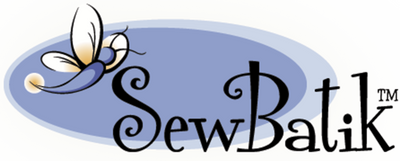
Let's Sew an Ironing Board Cover
Winter in North Dakota is always interesting. There are days when we are trapped in our rural home without the ability to reach our office which is 13 miles away. During one of our wind/blizzards I decided to reorganize my sewing room. The ironing boards seem to be the largest objects standing in the room - and also - the ugliest. Time to change things up.
I've sewn many ironing board covers for our office use, but not for our home. And, I didn't realize that I hadn't creating a tutorial to help make this process easier. Easy it is.
Click the image below to watch our YouTube Tutorial.
Ironing Board Cover Kits:
We package our ironing board cover kits to include everything you need to replace your entire ironing board cover and foam/batting. The kits are available in three (3) common board sizes: Big Board, A-Frame, Table Top
- Pattern
- Includes instructions for a big board and A-frame style board
- Batik Cotton
- You select the batik cotton
- You select the kit size for your ironing board
- Wool Batting
- We include 2 layers of wool batting
- Elastic
Measure Your Board:
Measure the length and width of your ironing board. Both measurements should be taken at the fullest length and width. Big boards are rectangular with curved edges. A-frame boards are shaped like a large "A" at one end and flat at the opposite end. A-frame boards are available in many widths and lengths. A-frame boards are also the style most commonly found in wall mounted hidden ironing boards.

Standard Measurements: (width x length)
Big Board: 22" x 59"
A-Frame Board: 15" x 55"
Table Top Board: 12" x 31"
Wall Mount Board: 11 1/2" x 43"
A-Frame boards can be purchased wider than the measurement above. I have a few antique boards and the have different measurements as well. You may also have the pleasure of a custom ironing board in your sewing space. Again, make sure you measure your surface and if our kits do not fit your custom area contact us and we will customize your space.
Tips to Sewing Your Board Cover:
Our approach to the ironing board cover is to keep it simple and utilize elastic as the method for securing the cover to the board. Trying to hold the batting and cover at the same time to tie a string isn't very easy. But, you can still insert string instead of elastic if this is your preference.
Let's get started:
- Prewash the fabric. Ironing uses steam and we want to avoid any fabric shrinkage after the cover is made.
- Drape the fabric over your board. Make sure there is at least 3"-4" of fabric beyond all the edges of the board.
- Trace the outline of your board onto the wrong side of the fabric using a chalk pencil or tracing chalk.
- Measure at least 3" away from the chalk outline all the way around your initial outline. This area will be the casing for the elastic.
- Using your scissors or rotary cutter, cut along the outside (2nd) chalk line to remove all remaining fabric.
Time to make the casing:
Fold and press 3/8" away from the outside edge, all the way around the outer edge.

Set your sewing machine to a basting stitch. Stitch around the curved corners and top of the A-frame area starting and stopping about 5" past the end of the curve.
Using the basting thread, slightly gather the thread around the curve. This will make it so easy to press and stitch the curves to create the casing. Fold the casing 1/2" and press, all the way around the outside edge. Adjust the gathering thread to either loosen or tighten the gathers keeping them even.

Use the chart below as your reference for where to start and top stitching. Each one of the starts and stops designate an entry point for our elastic.
We will add elastic to the two short ends of the big board. We will add elastic to the entire perimeter of the A-frame.

Add the elastic to the inside of the casing. I use the old fashioned bobby pin as my guide. Once the elastic is in place stitch it down running your stitches across the width of the elastic.
Close the opening of the elastic casing with normal stitching.

The ironing board cover is complete!
Before & After:


Look at the change of the ironing board covers! It just makes me happy to see a beautiful ironing board cover every time I want to press a garment or a few quilting blocks. Happy is a good thing!
* * * * *
We hope you find sewing a new ironing board cover simple. I personally love my new matching boards and now I have to add organizational baskets and a few wall hanging to my room. Well, there's always the constant organizing and cleaning that takes up a bit of time!
Have a great sewing day and...

